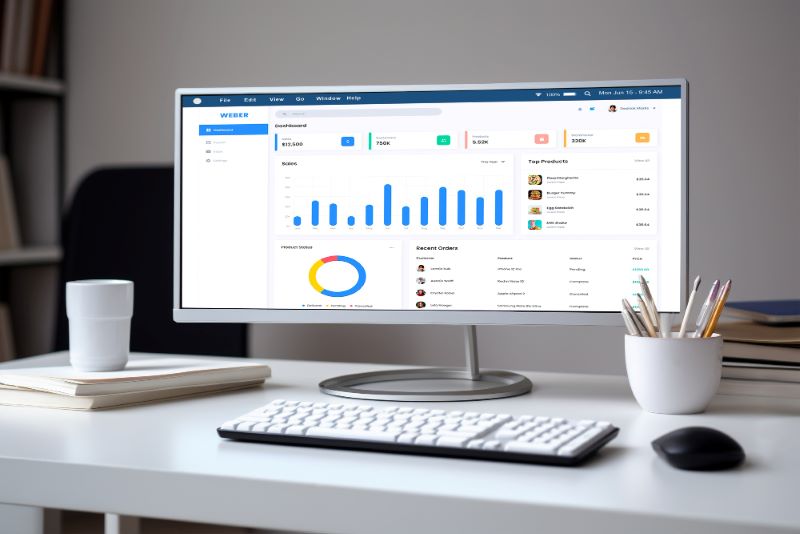The 3 Data Management Best Practices With Web Scraping

There is more data than ever available online. This is great for small businesses that can’t afford to conduct their own market research and large companies in need of data on national and global trends. Even a writer like myself needs data to understand the larger picture of certain societal issues when presenting a topic or story. With all this data available, one must learn how to manage it properly in order for it to be useful. The data management best practices involve making data easy to store, retrieve, and share. There are tons of options in the market for data management software, and web scraping helps you make informed decisions about management and make data collection easier.
If you are already familiar with the basics of data management practices, use the table of contents below to see ways web scraping can make the process even better.
Table of Contents
What Is Data Management And Why Is It Important?

Data management is the practice of storing, retrieving, and using data. Storage involves properly organizing the data and its contents. Data retrieval includes easy access to data which is especially important in a company wide setting. Using the data is most important but you must first make sure the data is of high enough quality to be useful.
It is important to have the best data management practices because it helps ensure that your data is secure, especially private company data. When you store data, you must also have backup and recovery methods in place as precaution. Importantly, data management practices help unify a team, whether small business or large company, by creating a shared understanding and access to information.
What Are The Best Practices For Data Management?

As defined before, data management has three components: storing, retrieving, and using. Below are tips that can help you at each stage of the management process.
Organize properly and reduce redundant data
Once you have collected data, the most important decision is how to organize it. Obviously, you can always organize alphabetically or numerically in files (whether hard copy or online). In order to avoid physical or digital clutter, make sure to set up a system that detects and reduces duplicates from the data sets. This will make the later steps of retrieving and using data much easier. For example, it helps avoid confusion in terms of sales when a customer makes a return or exchange.
Note basic properties of data for future reference
Even though organizing may feel like a mundane task at times, it is important that you use it as an opportunity to synthesize information as well. If you simply store digital files alphabetically, you may find yourself having to reread files later in order to understand the context again. If you create additional files with summaries or even basic metadata (author, content description, why it was created), it will be easier to grasp basic concepts when you return to it in the future. By considering useful metadata information you can save time in the future instead of rereading it all again. Larger businesses tend to occasionally replace positions. When you transfer existing files to new employees, extracting basic information helps them catch up and understand pre-existing knowledge when they begin the job. With the future in mind, here are 2021 data management trends to take advantage of.
Consider the best storage options
It is a blessing and a curse that there are so many options for data storage. While it means there is a solution that fits different needs, it also means that there is lots of research involved when looking for the best storage options. You can external storage (hard drives, flash/disc drives) as well as digital storage (cloud, network drive). Once you have selected the best options (keep reading for tips on selection), then you can apply a method commonly referred to as the 3-2-1 Backup Method. This involves having 3 copies of data stored using at least 2 different methods with one being offsite storage. Using this method ensures that you have multiple ways of accessing and recovering data in the future in case of possible data breaches or data loss. Being prepared for data loss is part of incorporating data management best practices.
3 Ways Web Scraping Helps With Data Management

Web scraping is the process of automatically extracting and organizing data from a webpage. While data collection can be done manually, web scraping tools save time, money, and labor. If you are unfamiliar with the basics of data and web scraping, read our other blog post on data sources.
Find the best management software
With so many data management software options, it can be daunting to make a decision. By scraping web results and product pages for software options, you can easily compare prices and features to ensure you find the perfect software to suit your unique needs. In addition to scraping for basic product information, scraping product reviews from other customers gives insight into possible issues you may encounter or positive attributes that relate to your project.
Check for quality data
With all this talk about collecting and storing data, it is essential that the data is of quality and worth storing in the first place. For large corporations, there is usually a mix of internally collected data (sales, products, marketing, etc) and public data (demographics, target audiences). It is important that all data be as updated as possible so you don’t make irrelevant decisions, especially when it comes to trend or branding oriented businesses. Large public data sets, such as census information or government collected information, can be collected using a web scraping tool. Scraping this information ensures it is updated and comprehensive without much work on your part. To learn more, read our blog on how to collect quality free data.
Team access to data
If you are managing data for a collaborative project or a large corporation, it is most important that the data is accessible to the rest of the team or those using it. What is the point of creating quality and organized data if no one can use it? Web scraping helps extract data but it also puts it into an easily downloadable and shareable spreadsheet. This is one of the most straightforward ways to share data with coworkers, especially if you are working with multiple projects or data sets.
The Best Data Practices For Your Next Project

Now that it is clear how necessary data management best practices are for success, you should begin to think about ways you can have the data best practices for your next project. Here are some tips on using web scraping when making decisions in the future.
Create a custom scraping solution
While basic web scraping tools can help you collect and manage some data on your own, you will need outside help if you’re collecting and managing large amounts of data. By working with Scraping Robot to create a custom scraping solution, you can scrape to fit your unique data needs and scrape by the millions (paying less per scrape). Importantly, the Scraping Robot team helps you manage proxies and ensures security and privacy. If a custom scraping solution is what you need, contact us and get started.
Scrape management software prices
Like I mentioned earlier, scraping is extremely useful in making decisions about management software or really any other essential purchase/decision. You can easily compare prices, reviews, and features of any software, product, or service to make sure you get the best deal suited to your unique needs.
Find keywords for metadata organizing
One of the most important tips for organizing data is highlighting metadata (easily identifiable markers of content) in order to help with comprehension and future reference of data. Sometimes it can be hard to come up with keywords that are relevant for marketing or branding purposes. Scraping search results of any kind by keywords can help you organize data online in a way that makes it easily found. When you go back to data for marketing purposes, you will already have keywords in mind that are relevant and useful when posting on social media or other sites instead of having to go through the process when revisiting data.
Conclusion

Collecting and organizing data is part of being in business right now. There is no way to avoid it. However, there are also many different data management best practices to help you make the most of the data you have. By organizing, storing, and using data properly, you will be able to reference vast amounts of information related to marketing and more which gives you more time to be creative. Enterprise data management (used both internally and externally) best practices will help you succeed as a team.
The information contained within this article, including information posted by official staff, guest-submitted material, message board postings, or other third-party material is presented solely for the purposes of education and furtherance of the knowledge of the reader. All trademarks used in this publication are hereby acknowledged as the property of their respective owners.
